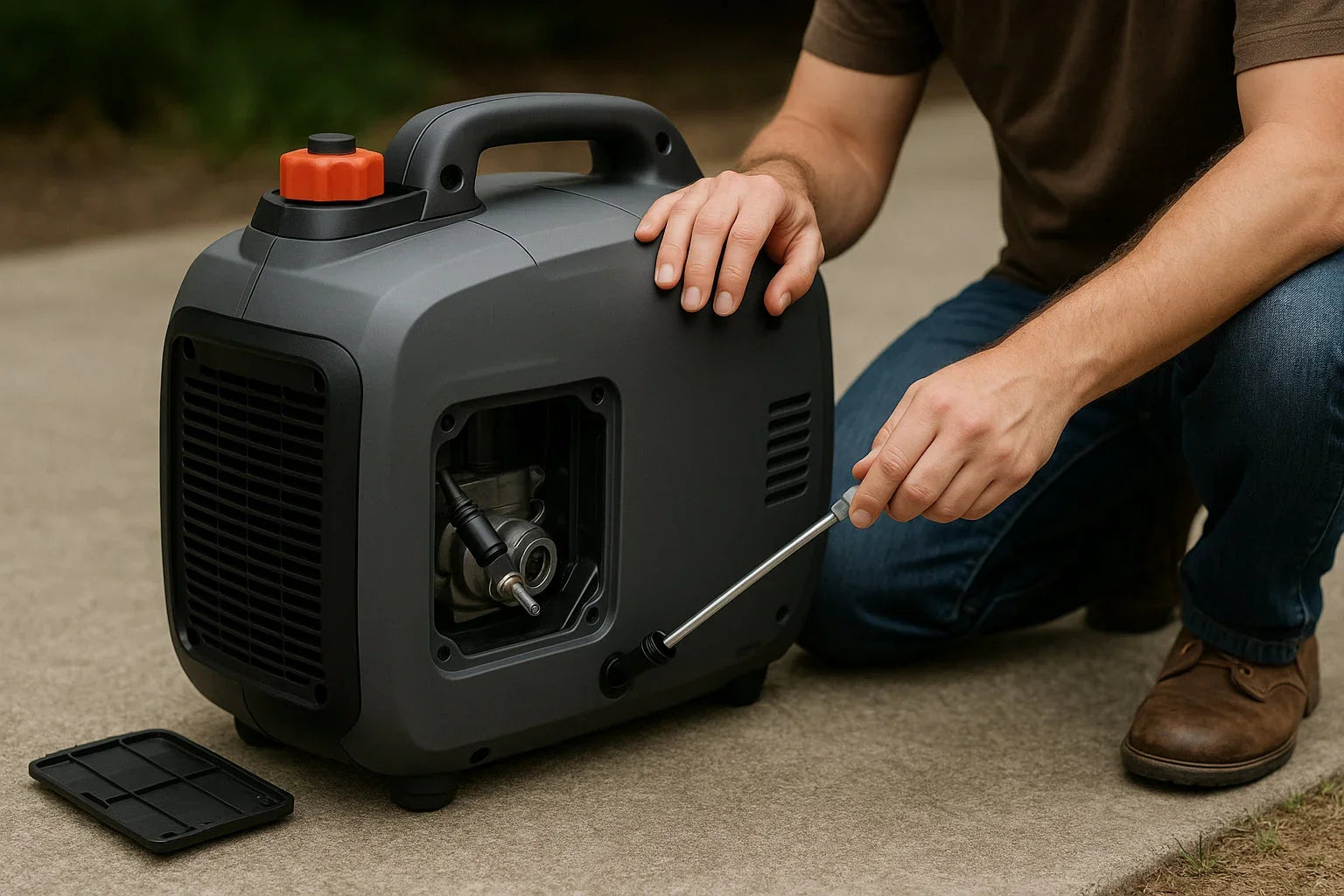Modern needs demand reliable off-grid power. A small quiet generator delivers clean electricity with minimal noise. Whether you’re camping, tailgating, or facing an outage, it ensures peace and power wherever you go.
However, performance depends on more than just turning it on. Portable generator maintenance and safe handling maximize its efficiency and lifespan. This guide outlines everything you need to keep your unit running safely and smoothly.
Small Quiet Generator Maintenance
Proper care prevents breakdowns, improves efficiency, and extends engine life. Even the best quiet generator can fail if neglected.
Skipping upkeep leads to poor fuel economy, carbon buildup, or damage to sensitive electronics. Routine checks and clean components keep your generator stable and safe.
Pre-Use Inspection
Every time before starting your small quiet generator, perform a simple check:
Inspect fuel level and freshness (avoid stale gas)
Check oil level using a clean dipstick
Confirm air filter is clean and in place
Examine spark plug condition and cable tightness
Look for cracks or leaks in fuel lines
Clear exhaust from obstructions or corrosion
Always operate the generator on a level, ventilated surface. Never run it indoors, even with open windows or garage doors.
Cleaning Procedures
A dirty generator runs hot and wears faster. Every 20–30 hours of use:
Wipe down housing with a damp cloth
Use compressed air to clean vents and intakes
Wash the air filter with mild detergent and dry fully
Remove leaves and debris from the muffler area
Do not spray water directly into any part of the unit. Moisture can harm electrical components.
Fuel and Oil Maintenance
Fuel quality and oil health are vital. Use fresh unleaded gasoline or clean propane. For best results, choose 10W-30 synthetic oil.
Change oil:
After the first 5 hours of break-in
Every 25–50 hours of runtime, or each season
When using gasoline, add a stabilizer if storing fuel longer than 30 days. Drain the fuel system entirely for long-term storage. Keep a dedicated, labeled fuel can nearby to avoid confusion with vehicle fuel.
For propane-powered models, always check for hose integrity and secure connections.
Battery Care
If your generator uses electric start, the battery also needs attention:
Measure voltage once a month
Disconnect terminals during long storage
Store batteries in a cool, dry space
Recharge lithium or sealed lead-acid types every 3–6 months
Neglecting battery care shortens its life and risks startup failure during emergencies.
Long-Term Storage Tips
Improper storage reduces generator life. Prepare your portable generator for downtime properly:
Clean all external surfaces
Drain the fuel tank or run it dry
Disconnect and remove the battery
Use a breathable fabric cover to prevent rust
Store indoors, away from damp or rodent activity
Avoid plastic tarps—these trap moisture. Once per month, start the generator for a few minutes to lubricate parts and circulate fluids.
Load and Electrical Safety
Never exceed your generator’s rated wattage. Total connected load should not surpass 80% of the generator's capacity.
Estimate the total wattage of all devices before plugging in. Use heavy-duty, outdoor-rated extension cords. Always match the generator outlet type to the cord plug.
Overloading causes overheating, voltage drops, and breaker trips. Some small quiet generators offer automatic overload protection, but it's better to avoid it entirely.
Reducing Noise Impact
Despite being quiet, generator placement affects perceived noise. To minimize sound:
Position on grass or a vibration-dampening mat
Add plywood panels to deflect noise away from campsites
Enable Eco mode to lower engine RPM under light loads
Direct the exhaust away from buildings or tents
Most quiet camping generators operate under 60 decibels. That meets many park and neighborhood noise requirements.
Troubleshooting Common Issues
| Problem | Cause | Solution |
| Doesn’t start | Old fuel or low oil | Replace fuel; top up oil |
| Rough operation | Clogged air filter or bad spark plug | Clean/replace parts |
| No output | Tripped breaker or overload | Reset breaker; reduce load |
| Shuts down suddenly | Overheat or carbon monoxide alert | Let cool; move to open space |
Many issues stem from skipped maintenance. Keep your unit clean and serviced to avoid surprises.
Eco-Friendly Practices
Modern small generators already pollute less, but you can do more:
Select dual-fuel models—propane emits fewer emissions than gasoline
Use power only when needed
Recycle used oil, air filters, and batteries responsibly
To estimate your environmental savings, use the EPA Greenhouse Gas Equivalencies Calculator.
Final Thoughts
A small quiet generator is more than backup power—it’s a tool for independence and security. With proper use and care, it will serve reliably for years.
Follow this checklist: inspect before use, clean regularly, change fluids, avoid overloading, and store properly. Whether facing a power outage or enjoying the outdoors, a well-maintained portable generator gives you peace of mind.



